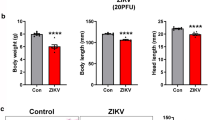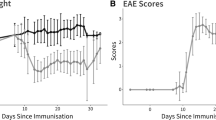Abstract
The conversion of tachyzoites into bradyzoites is a way for Toxoplasma gondii to establish a chronic and asymptomatic infection and achieve lifelong persistence in the host. The bradyzoites form tissue cysts in the retina, but not much is known about the horizontal distribution of the cysts or their interactions with glial cells in the retina. A chronic ocular toxoplasmosis model was induced by per oral administration of T. gondii Me49 strain cysts to BALB/c mice. Two months after the infection, retinas were flat-mounted and immunostained to detect cysts, ganglion cells, Müller cells, astrocytes, and microglial cells, followed by observation under fluorescence and confocal microscope. The horizontal distribution showed a rather clustered pattern, but the clusters were not restricted to certain location of the retina. Axial distribution was confined to the inner retina, mostly in ganglion cell layer or the inner plexiform layer. Both ganglion cells, a type of retinal neurons, and Müller cells, predominant retinal glial cells, could harbor cysts. The cysts were spatially separated from astrocytes, the most abundant glial cells in the ganglion cell layer, while close spatial distribution of microglial cells was observed in two thirds of retinal cysts. In this study, we demonstrated that the retinal cysts were not evenly distributed horizontally and were confined to the inner retina axially. Both neurons and one type of glial cells could harbor cysts, and topographic analysis of other glial cells suggests role of microglial cells in chronic ocular toxoplasmosis.








Similar content being viewed by others
References
Afonso C, Paixao VB, Costa RM (2012) Chronic toxoplasma infection modifies the structure and the risk of host behavior. PLoS One 7:e32489
Belfort R Jr, Silveira C, Muccioli C (2013) Chapter 85- ocular toxoplasmosis A2- Ryan, Stephen J. In: Sadda SR, Hinton DR, Schachat AP, Sadda SR, Wilkinson CP, Wiedemann P, Schachat AP (eds) Retina, Fifth edn. W.B. Saunders, London, pp 1494–1499
Berenreiterova M, Flegr J, Kubena AA, Nemec P (2011) The distribution of toxoplasma gondii cysts in the brain of a mouse with latent toxoplasmosis: implications for the behavioral manipulation hypothesis. PLoS One 6:e28925
Blader IJ, Saeij JP (2009) Communication between toxoplasma gondii and its host: impact on parasite growth, development, immune evasion, and virulence. APMIS 117:458–476
Burg JL, Grover CM, Pouletty P, Boothroyd JC (1989) Direct and sensitive detection of a pathogenic protozoan, toxoplasma gondii, by polymerase chain reaction. J Clin Microbiol 27:1787–1792
Bussow H (1980) The astrocytes in the retina and optic nerve head of mammals: a special glia for the ganglion cell axons. Cell Tissue Res 206:367–378
Cabral CM, Tuladhar S, Dietrich HK, Nguyen E, MacDonald WR, Trivedi T, Devineni A, Koshy AA (2016) Neurons are the primary target cell for the brain-tropic intracellular parasite toxoplasma gondii. PLoS Pathog 12:e1005447
Calabrese KS, Tedesco RC, Zaverucha do Valle T, Barbosa HS (2008) Serum and aqueous humour cytokine response and histopathological alterations during ocular toxoplasma gondii infection in C57BL/6 mice. Micron 39:1335–1341
Cunha-Vaz J (1979) The blood-ocular barriers. Surv Ophthalmol 23:279–296
Cunha-Vaz J, Bernardes R, Lobo C (2011) Blood-retinal barrier. Eur J Ophthalmol 21(Suppl 6):S3–S9
Deckert M, Sedgwick JD, Fischer E, Schlüter D (2006) Regulation of microglial cell responses in murine toxoplasma encephalitis by CD200/CD200 receptor interaction. Acta Neuropathol 111:548–558
Dukaczewska A, Tedesco R, Liesenfeld O (2015) Experimental models of ocular infection with toxoplasma Gondii. Eur J Microbiol Immunol (Bp) 5:293–305
Edvinsson B, Jalal S, Nord CE, Pedersen BS, Evengard B, ESGo T (2004) DNA extraction and PCR assays for detection of toxoplasma gondii. APMIS 112:342–348
Escoffier P, Jeanny JC, Marinach-Patrice C, Jonet L, Raoul W, Behar-Cohen F, Paris L, Danis M, Dubremetz JF, Mazier D (2010) Toxoplasma gondii: flat-mounting of retina as a new tool for the observation of ocular infection in mice. Exp Parasitol 126:259–262
Ferguson DJ, Graham DI, Hutchison WM (1991) Pathological changes in the brains of mice infected with toxoplasma gondii: a histological, immunocytochemical and ultrastructural study. International Journal of Experimental Pathology 72:463–474
Ferguson DJ, Hutchison WM (1987) The host-parasite relationship of toxoplasma gondii in the brains of chronically infected mice. Virchows Arch A Pathol Anat Histopathol 411:39–43
Ferguson LR, Dominguez JM 2nd, Balaiya S, Grover S, Chalam KV (2013) Retinal thickness normative data in wild-type mice using customized miniature SD-OCT. PLoS One 8:e67265
Gazzinelli RT, Brezin A, Li Q, Nussenblatt RB, Chan CC (1994) Toxoplasma gondii: acquired ocular toxoplasmosis in the murine model, protective role of TNF-alpha and IFN-gamma. Exp Parasitol 78:217–229
Gazzinelli RT, Eltoum I, Wynn TA, Sher A (1993) Acute cerebral toxoplasmosis is induced by in vivo neutralization of TNF-alpha and correlates with the down-regulated expression of inducible nitric oxide synthase and other markers of macrophage activation. J Immunol (Baltimore, Md: 1950) 151:3672–3681
Goldman D (2014) Müller glial cell reprogramming and retina regeneration. Nat Rev Neurosci 15:431–442
Gonzalez LE, Rojnik B, Urrea F, Urdaneta H, Petrosino P, Colasante C, Pino S, Hernandez L (2007) Toxoplasma gondii infection lower anxiety as measured in the plus-maze and social interaction tests in rats a behavioral analysis. Behav Brain Res 177:70–79
Gregg RG, McCall MA, Massey SC (2013) Function and anatomy of the mammalian retina. In: Retina (fifth edition). Elsevier, pp 360–400
Halonen SK, Lyman WD, Chiu FC (1996) Growth and development of toxoplasma gondii in human neurons and astrocytes. J Neuropathol Exp Neurol 55:1150–1156
Hitziger N, Dellacasa I, Albiger B, Barragan A (2005) Dissemination of toxoplasma gondii to immunoprivileged organs and role of toll/interleukin-1 receptor signalling for host resistance assessed by in vivo bioluminescence imaging. Cell Microbiol 7:837–848
Jones TC, Bienz KA, Erb P (1986) In vitro cultivation of toxoplasma gondii cysts in astrocytes in the presence of gamma interferon. Infect Immun 51:147–156
Kompalic-Cristo A, Frotta C, Suarez-Mutis M, Fernandes O, Britto C (2007) Evaluation of a real-time PCR assay based on the repetitive B1 gene for the detection of toxoplasma gondii in human peripheral blood. Parasitol Res 101:619–625
Koshy AA, Cabral CM (2014) 3-D Imaging and Analysis of Neurons Infected In Vivo with Toxoplasma gondii J Vis Exp: JoVE:52237
Lenkowski JR, Raymond PA (2014) Müller glia: stem cells for generation and regeneration of retinal neurons in teleost fish. Prog Retin Eye Res 0:94–123
Lyons RE, Anthony JP, Ferguson DJ, Byrne N, Alexander J, Roberts F, Roberts CW (2001) Immunological studies of chronic ocular toxoplasmosis: up-regulation of major histocompatibility complex class I and transforming growth factor beta and a protective role for interleukin-6. Infect Immun 69:2589–2595
Maenz M, Schluter D, Liesenfeld O, Schares G, Gross U, Pleyer U (2014) Ocular toxoplasmosis past, present and new aspects of an old disease. Prog Retin Eye Res 39:77–106
McMenamin PG, Dutton GN, Hay J, Cameron S (1986) The ultrastructural pathology of congenital murine toxoplasmic retinochoroiditis. Part I: the localization and morphology of toxoplasma cysts in the retina. Exp Eye Res 43:529–543
Melzer TC, Cranston HJ, Weiss LM, Halonen SK (2010) Host cell preference of toxoplasma gondii cysts in murine brain: a confocal study. J Neuro-Oncol 1
Norose K, Aosai F, Mun HS, Yano A (2006) Effects of sulfamethoxazole on murine ocular toxoplasmosis in interferon-gamma knockout mice. Invest Ophthalmol Vis Sci 47:265–271
Norose K, Kikumura A, Luster AD, Hunter CA, Harris TH (2011) CXCL10 is required to maintain T-cell populations and to control parasite replication during chronic ocular toxoplasmosis. Invest Ophthalmol Vis Sci 52:389–398
Norose K, Mun HS, Aosai F, Chen M, Piao LX, Kobayashi M, Iwakura Y, Yano A (2003) IFN-gamma-regulated toxoplasma gondii distribution and load in the murine eye. Invest Ophthalmol Vis Sci 44:4375–4381
O'Koren EG, Mathew R, Saban DR (2016) Fate mapping reveals that microglia and recruited monocyte-derived macrophages are definitively distinguishable by phenotype in the retina. Sci Rep 6:20636
Roberts F, McLeod R (1999) Pathogenesis of toxoplasmic retinochoroiditis. Parasitol Today 15:51–57
Song HB (2017) Investigation of Neuroretinal and retinal pigment epithelium injury by Toxoplasma gondii. Seoul National University, Dissertation
Stahl A, Connor KM, Sapieha P, Chen J, Dennison RJ, Krah NM, Seaward MR, Willett KL, Aderman CM, Guerin KI, Hua J, Löfqvist C, Hellström A, Smith LEH (2010) The mouse retina as an angiogenesis model. Invest Ophthalmol Vis Sci 51:2813–2826
Tedesco RC, Smith RL, Corte-Real S, Calabrese KS (2004) Ocular toxoplasmosis: the role of retinal pigment epithelium migration in infection. Parasitol Res 92:467–472
Tual-Chalot S, Allinson KR, Fruttiger M, Arthur HM (2013) Whole mount immunofluorescent staining of the neonatal mouse retina to investigate angiogenesis in vivo J Vis Exp:e50546
Turner DL, Cepko CL (1987) A common progenitor for neurons and glia persists in rat retina late in development. Nature 328:131–136
Vyas A, Kim SK, Giacomini N, Boothroyd JC, Sapolsky RM (2007) Behavioral changes induced by toxoplasma infection of rodents are highly specific to aversion of cat odors. Proc Natl Acad Sci U S A 104:6442–6447
Zhang YW, Halonen SK, Ma YF, Wittner M, Weiss LM (2001) Initial characterization of CST1, a toxoplasma gondii cyst wall glycoprotein. Infect Immun 69:501–507
Acknowledgements
This article is based on the doctoral dissertation of the first author (Song 2017), completed under the supervision of the corresponding author (JHK) at Seoul National University. This study was supported by Seoul National University Hospital Research Grant (04-2015-0270), the Bio & Medical Technology Development Program of the National Research Foundation funded by the Korean government, MSIP (2015M3A9E6028949), and the Development of Platform Technology for Innovative Medical Measurements Program from the Korea Research Institute of Standards and Science (KRISS-2017-GP2017-0020).
Author information
Authors and Affiliations
Corresponding author
Ethics declarations
All animal experiments were approved by the Institutional Animal Care and Use Committee of Seoul National University and were conducted in agreement with the ARVO statement for the Use of Animals in Ophthalmic and Vision Research.
Additional information
Section Editor: Daniel K Howe
Rights and permissions
About this article
Cite this article
Song, H.B., Jung, BK., Kim, J.H. et al. Investigation of tissue cysts in the retina in a mouse model of ocular toxoplasmosis: distribution and interaction with glial cells. Parasitol Res 117, 2597–2605 (2018). https://doi.org/10.1007/s00436-018-5950-3
Received:
Accepted:
Published:
Issue Date:
DOI: https://doi.org/10.1007/s00436-018-5950-3




